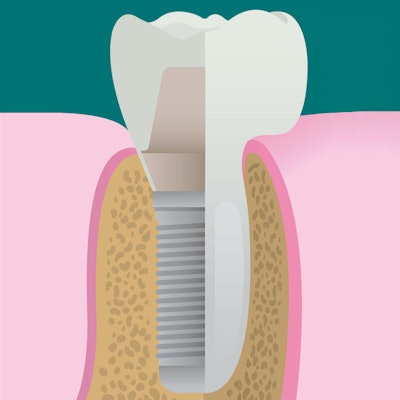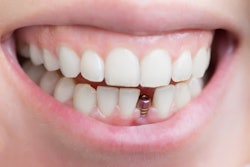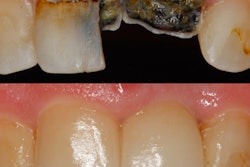
Implant healing abutments (IHAs) appear to be safe to use immediately after implant placement, according to the findings of a new study. These temporary abutments may be able to promote healthy soft-tissue healing, thereby reducing the risk of peri-implantitis.
Despite their increasing popularity in dental implant clinics, healing abutments have not been readily studied by the scientific community. Therefore, U.S. researchers decided to evaluate the surfaces of 10 implant healing abutments before and after placement to better understand how they work in the oral cavity. Their findings were published in Clinical Implant Dentistry and Related Research (December 6, 2017).
"[Implant healing abutments] are critical components of the dental implant system guiding soft-tissue healing and providing a platform for the topographic configuration of the peri-implant mucosa," wrote the authors, led by Sutton Wheelis, a biomedical engineering graduate student at the University of Texas at Dallas. "Although its clinical relevance has been recognized, there is little focus on how the components respond to clinical placement or how anodization of these components affects their stability in the oral environment."
No wide-scale wear after placement
Despite excellent biocompatibility, titanium and titanium alloy implants fail between 5% and 10% of the time, most often because of bacterial infiltration. To prevent this, the dental community has recently expanded its focus on tools that can promote healthy integration with the soft tissues surrounding dental implants, including implant healing abutments. The researchers, therefore, investigated how the surfaces of these abutments change after implantation.
"Characterizing of IHA surfaces will help elucidate the effects that the postplacement environment has on these components," the authors wrote. "In addition, the results will help support speculations that maintaining the integrity of the IHA surface may be a contributing component in soft-tissue health."
The researchers evaluated 10 titanium Straumann implant healing abutments with different spectroscopic and microscopic techniques before and after they were implanted in patients at a dental implant clinic in Dallas. They also studied five controls that were not used in patients as a reference.
| Implant healing abutments included in the study | ||
| Model, surface treatment | Dimensions (mm) | Sample size |
| Regular connection, machined, anodized | 4.0 x 6.5 | 5 for placement 2 for controls |
| Regular connection, machined, anodized | 4.0 x 5.0 | 5 for placement 2 for controls |
| Regular neck, machined | 4.5 | 1 for control |
The implanted healing abutments showed little change in surface oxidation or crystalline structure. The researchers also found no evidence of wide-scale wear or corrosion on the implants, suggesting that they are suitable for use in the oral cavity.
Local areas of wear on the implants were likely attributable to contacting interfaces, bolus, and regular dental care, according to the authors. However, white residue on the abutments was likely bacterial in nature.
"Because a portion of IHAs are exposed to the oral environment during placement, the source of this residue could be bacterial plaque, bolus, soft tissue, or a variety of protein-based compounds present in saliva that have adhered to the surface," they wrote.
The white residue formed on the implant surfaces even after cleaning and sterilization, the authors noted. Because of this, it may be worth reconsidering the practice of reusing healing abutments and also further investigating the role that this organic material plays in peri-implantitis, they wrote.
Corrosion resistant in oral environment
In addition, the researchers found that the implanted healing abutments had a significantly lower resistance of the oxide layer to corrosion. However, the implanted anodized abutments appeared significantly more resistant to corrosion than nonanodized sample.
"It is reasonable to suggest that although there was a destructive process that occurred on the surface of IHAs that resulted in a thinner oxide layer on removals, the surface is still more corrosion-resistant than a nonanodized component," wrote the authors, adding that their findings still indicate that these abutments are corrosion-resistant in oral environment conditions.
It is important to note that this study only included 10 intervention implant healing abutments that were all from the same brand. Thus, there is need for additional studies to further evaluate the mechanisms of soft-tissue healing with these abutments and the best practices for their clinical use.
"IHAs were found through microscopic, spectroscopic, and electrochemical analysis to be capable to survive the challenges of the intraoral environment during the immediate postsurgical healing period of three to four months, while maintaining the integrity of the composition of their surface," the authors concluded. "These initial findings suggest that additional attention should be given to surface treatments performed on components like IHA, and the potential impact of reusing IHA should be investigated."



















